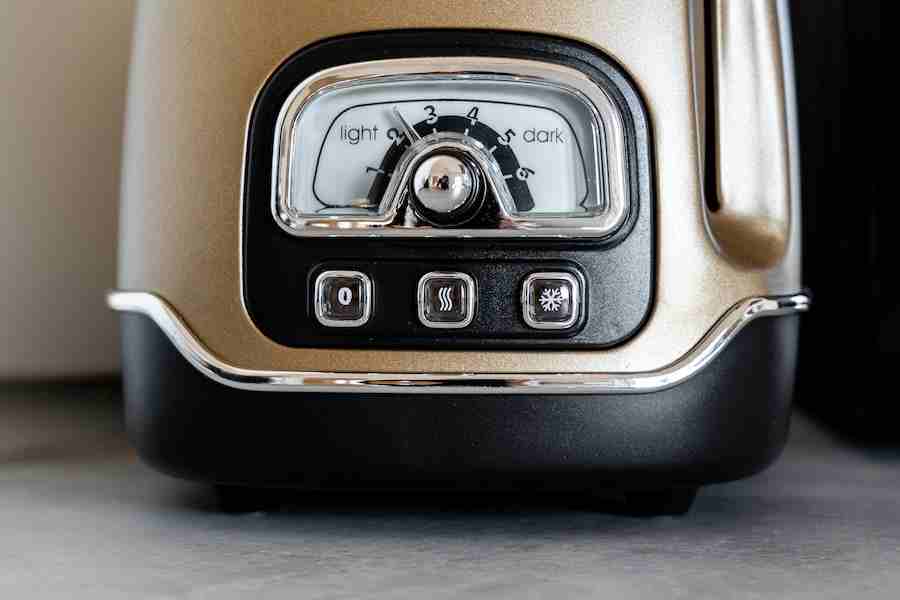In the modern household, toasters play an indispensable role in our daily routine, swiftly transforming ordinary slices of bread into delectably crisp and golden-brown delights. Central to this culinary magic is the conversion of electrical energy into a form that imparts warmth and texture to our breakfast staples. Understanding how this conversion takes place not only unravels the science behind our toasters but also sheds light on the broader principles of energy transformation that power our technological world.
What Is Electrical Energy Converted To Inside A Toaster?
Inside a toaster, electrical energy is primarily converted into heat energy. This transformation occurs as the electrical current flows through the toaster’s heating elements, which offer resistance to the current. The resistance generates heat through the Joule heating principle, subsequently toasting the bread slices placed within the appliance.
The Science Behind Toaster Operation
The operation of a toaster is rooted in the ingenious interplay of its components, each contributing to the art of achieving the perfect toast. At its core, a toaster consists of heating elements, bread slots, and control settings, all orchestrated to create the quintessential toasting experience.
Heating elements, typically crafted from materials with high electrical resistance like nichrome, are the workhorses of the toaster. When electrical current courses through these elements, their resistance causes the conversion of electrical energy into heat. This heat is then radiated outward, directed towards the bread slices held within the slots.
The bread slots, strategically designed to accommodate various sizes and thicknesses of bread, serve as the canvas for the toasting process. Placing the bread slices into these slots ensures direct exposure to the heat emanating from the heating elements. The toaster’s control settings come into play at this point, allowing users to determine the intensity and duration of toasting based on their preferences.
As the heating elements warm up, they transform electrical energy into intense heat through the phenomenon of Joule heating. This generated heat is transferred to the bread slices through a combination of conduction and radiation. The starches and sugars present in the bread undergo a Maillard reaction, resulting in the appealing golden-brown color and delightful aroma characteristic of toasted bread. The convergence of these factors highlights the intricate science underlying the seemingly simple task of toasting bread.
Factors Affecting Efficiency And Performance
The efficiency and performance of a toaster are influenced by several key factors, each playing a vital role in determining the quality of the toasting process.
- Electrical Energy Quality: The stability of the electrical energy supply greatly impacts the toaster’s performance. Fluctuations in voltage or current can affect the heating elements’ ability to generate consistent and reliable heat. Therefore, a steady electrical supply is essential for optimal toasting.
- Heating Element Material and Design: The choice of materials for the heating elements directly affects their efficiency and longevity. Nichrome, an alloy known for its high resistance and heat-resistance properties, is commonly used. Additionally, the design of the heating elements, including their shape and configuration, influences the even distribution of heat across the bread slices.
- Insulation and Heat Retention: The toaster’s casing and insulation materials determine how well heat is retained within the appliance. Efficient insulation prevents heat loss to the surrounding environment, ensuring that the generated heat is directed toward toasting the bread rather than dissipating wastefully.
- Toaster Casing and Ventilation: The casing’s design and ventilation play a role in maintaining a safe external temperature while the toaster is in operation. Proper ventilation prevents overheating and extends the appliance’s lifespan.
- Control Settings and Timing: The ability to adjust toasting time and intensity allows users to customize their toast according to personal preferences. Effective control settings ensure that the toasting process is consistent and produces the desired level of crispness without undercooking or burning.
- Uniformity of Heating: Ensuring an even distribution of heat across the bread slices is crucial for achieving uniform toasting. A toaster with well-designed heating elements and an appropriate arrangement of bread slots contributes to consistent results.
- Safety Measures: Modern toasters incorporate safety features such as overcurrent and overvoltage protection. These mechanisms safeguard the appliance and prevent potential hazards that could arise from excessive electrical current or voltage.
How To Prevent Overheating And Fire Hazards?
Preventing overheating and fire hazards in toasters is essential to ensure the safety of both the appliance and the surrounding environment. Here are several measures you can take:
- Regular Cleaning: Crumbs and debris that accumulate at the bottom of the toaster can pose a fire hazard. Regularly clean the toaster by emptying the crumb tray and giving the interior a gentle shake to dislodge any loose particles.
- Proper Placement: Place the toaster on a flat, stable, and heat-resistant surface. Avoid using the toaster near flammable materials, such as curtains or paper towels, which could catch fire due to heat exposure.
- Adequate Ventilation: Ensure that the toaster has proper ventilation and is not obstructed by other objects. Proper ventilation prevents excessive heat buildup inside the toaster.
- Avoid Overloading: Follow the manufacturer’s guidelines regarding the maximum number of slices that can be toasted simultaneously. Overloading the toaster can lead to uneven heating and potential overheating.
- Monitor Usage: Never leave the toaster unattended while it’s in operation. Keep an eye on the toasting process to prevent any signs of overheating, burning, or smoke.
- Check Cord and Plug: Regularly inspect the power cord and plug for any signs of damage, fraying, or exposed wires. Damaged cords can increase the risk of electrical problems, including overheating.
- Avoid High Settings: While toasting, avoid using excessively high heat settings that could lead to overheating or burning. Start with lower settings and adjust as needed.
Future Trends In Toaster Technology
As technology continues to advance, even seemingly simple household appliances like toasters are evolving to incorporate innovative features and designs. Here are some future trends in toaster technology:
- Smart Connectivity: Smart toasters are likely to become more prevalent, allowing users to control and monitor the toasting process through smartphone apps. This could include adjusting settings, receiving notifications when toasting is complete, and even accessing a database of recommended toasting times for different types of bread.
- IoT Integration: Internet of Things (IoT) connectivity could enable toasters to communicate with other smart kitchen appliances. For instance, a smart toaster could sync with a smart refrigerator to suggest toastable items based on their expiration dates.
- Customizable Toasting Profiles: Toaster technology might allow users to create and save their preferred toasting profiles for different types of bread or personal preferences. This could lead to more consistent and tailored toasting results.
- Precision Sensors: Advanced sensors could be incorporated to measure the internal temperature of the bread slices, ensuring that they are toasted to the exact desired level without the risk of overcooking.
- Energy Efficiency: Future toasters could focus on minimizing energy consumption by using optimized heating elements, improved insulation, and advanced heat distribution techniques.
- Innovative Heating Technologies: Research into new heating technologies, such as advanced ceramics or infrared heating elements, could revolutionize the toasting process by delivering more even and efficient heating.
- Voice Control: Voice-activated toasters could become a reality, allowing users to command the toaster to start, stop, or adjust toasting settings using voice commands.
Conclusion
In the seemingly simple act of toasting bread, a symphony of scientific principles and technological advancements converge. The conversion of electrical energy into heat within a toaster exemplifies the profound impact of innovation on everyday appliances. As we anticipate the evolution of toasters—embracing smart features, sustainable designs, and enhanced safety measures—we glimpse the broader trajectory of technological progress. By appreciating the intricate dance of energy transformation within a toaster, we gain insights into the dynamic interplay between science, convenience, and the ever-changing world of technology.
FAQ’s
Q: Why Does My Toaster Have Different Heat Settings?
Heat settings allow you to customize how toasted your bread gets. Higher settings deliver more heat and crispness, while lower settings offer gentler toasting.
Q: Are Toaster Heating Elements Safe To Touch?
No, heating elements become extremely hot during operation. Avoid touching them to prevent burns or injuries.
Q: Can I Toast Items Other Than Bread In A Toaster?
It’s best to stick to toasting bread in a traditional toaster. Items with high moisture content, like fruits or vegetables, can cause problems or even create a fire hazard.
Q: Why Is My Toaster Smoking?
Smoking can occur due to accumulated crumbs or food debris burning on the heating elements. Clean your toaster regularly to prevent this and reduce the risk of fire.
Q: Are Smart Toasters Safe From Hacking?
Manufacturers implement security measures, but like any connected device, smart toasters could potentially be vulnerable. Keeping your devices updated and using strong passwords helps enhance security.





















